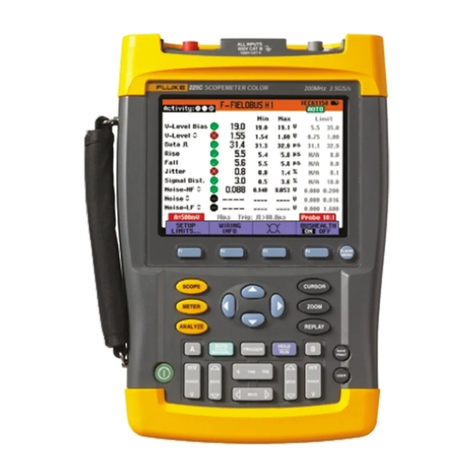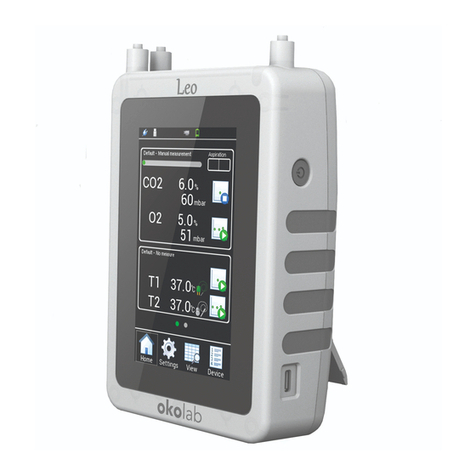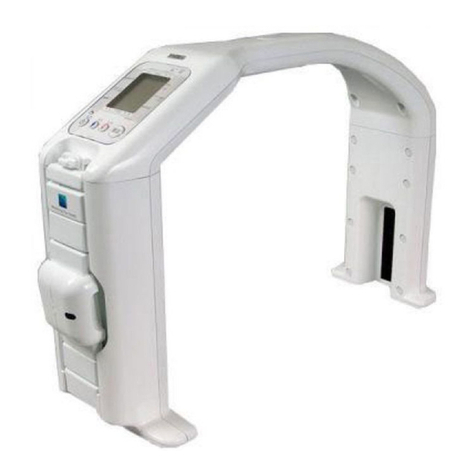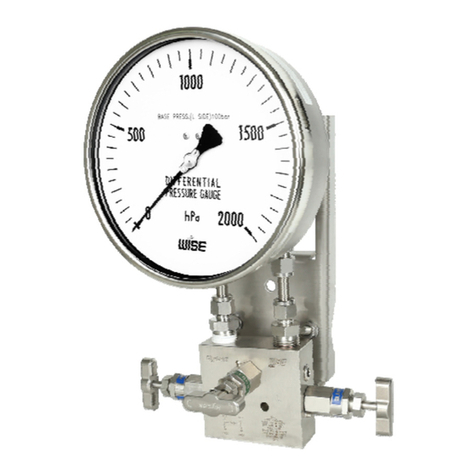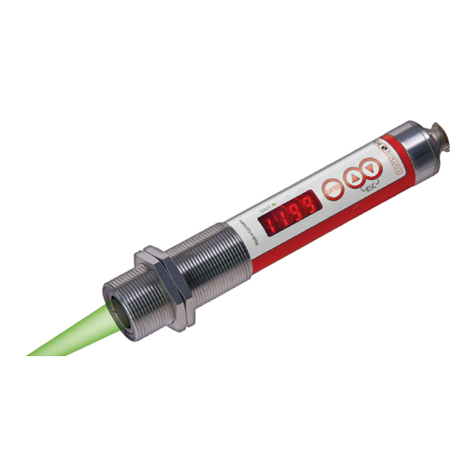InPhotonics RPB Series User manual

RPB
Fiber Optic Raman Probe
Users’ Manual
(Version 1.02)
Model RPBXXX
StellarNet, Inc.
14390 Carlson Circle
Tampa, Florida 33626


StellarNet, Inc., 2012 i
TABLE OF CONTENTS
Page
I. Overview...................................................................................................................1
II. Initial Setup and Installation......................................................................................3
III. Measuring Samples with the RamanProbe .................................................................4
A. Use of the Internal Standard..............................................................................5
IV. Laser Safety
A. Sample Calculation of Nominal Hazard Zones..................................................6
B. Precautions for Safe Operation..........................................................................7
V. Maintenance and Service Procedures.........................................................................8
VI. Warranty...................................................................................................................8
VII. Customer Support...................................................................................................... 8


StellarNet, Inc., 2012 1
CAUTION
The RPB can be operated with a laser source. Visible and/or invisible laser radiation
can be emitted from the probe aperture. Appropriate laser safety procedures should
be observed when operating the probe with a laser source, including the use of
protective eyewear. See the laser manufacturer’s manual for precautions.
I. Overview
The RPB is available in different configurations as indicated by the Model Number shown on
the identification label:
RPBXXX
where XXX is the excitation wavelength (in nm). The probes are constructed with a 105 µm
excitation fiber and a 200 µm collection fiber. The default working distance is 7.5 mm;
options for 5.0 and 10 mm are also available, as well as custom focal lengths. The
connectors terminating each fiber optic cable are either FC or SMA. FC connectors have a
notch or key that results in the connectors fitting in the receptacle in one orientation. SMA
connectors can be rotated in the receptacle.
Please note the Model Number prior to use. The serial number is also provided on the
identification label; this number is unique to each probe and should be provided when
corresponding with InPhotonics.
The patented InPhotonics fiber optic Raman probe utilizes micro-optic components for
delivering the laser excitation source to the sample and for collection of scattered light
resulting in a compact probe head that is fiber optically coupled to the laser source and
spectrograph.
Through the efficient use of bandpass, dichroic and edge filters for separating the excitation
and scattered light, the InPhotonics RPB utilizes a backscattering (θ=180°) sampling
geometry. The backscattering collection geometry allows easy sample alignment and
provides optimum throughput because of the total overlap between the excitation and
collection cones. The spot size of the laser varies with the transmission properties of the
sample under measurement. Using a collection fiber that is twice the size of the excitation
fiber ensures maximum signal collection of transparent as well as opaque materials.
The RPB has a main optical body and an extension tip holding the final focusing lens. A
schematic diagram of the internal optics is shown in Figure I.1. The optical design is patent
protected (U.S. Patent #5,122,127). The InPhotonics RPB also incorporates a manual shutter
with calibration standard (see Section III.A). The shutter is in the “open” position when the
red label is exposed.

StellarNet, Inc., 20122
Figure I.1. Schematic diagram of the RamanProbe; optics are not to scale.
The InPhotonics RPB is coupled to the excitation source and the spectrograph via two optical
fibers to allow remote measurements of samples. Each fiber optic subunit is provided in a
protective polyurethane jacket. The outer jacketing material is also polyurethane. The
resulting cable has a diameter of ~0.25" and remains fairly flexible. The probes are available
with various fiber optic connectors such as FC, SMA and custom connectors.
The RPB can be used with a laser source, primarily with a CW laser source. It is possible to
interface the RPB with a pulsed laser; however, extreme care is required in coupling the
probe optical fiber with the laser since the energy delivery per pulse can be extremely high
and may cause damage to the fiber optic.
Note: Each probe is designed to be used with a single excitation wavelength (up to 500 mW
CW) as indicated by the Model Number. Serious damage to the fiber optic probe and the
laser source can occur if an unsuitable laser source is used with the probe. Consult
InPhotonics to properly configure the fiber optic connectors for higher power applications or
if there are questions about appropriate laser sources. Figure I.2 shows a schematic diagram
of how the RPB fiber optic probe can be interfaced with a laser source.
Figure I.2. Integration of the RPB probe with a laser source and spectrograph.
RPB fiber optic probe
Fiber optic
cables
CW Laser Source
Spectrograph

StellarNet, Inc., 2012 3
II. Initial Setup and Operation
CAUTION
The use of controls and adjustments, or performance of procedures other than
those specified herein may result in hazardous laser radiation exposure.
When attached to a laser source, the RamanProbe provides a focused output of
laser radiation with the laser class designated by the laser source. The user
should consult the laser manufacturer’s (or spectrometer manufacturer’s)
manual prior to installation and use. During normal operation, laser radiation
is accessible from the end of the fiber optic probe. The output energy should be
enclosed whenever possible (using the beam attenuator provided) to avoid
unnecessary exposure. The laser source should also be turned off when the
system is not in immediate use.
AVOID DIRECT EXPOSURE TO THE LASER BEAM
1. Remove the protective covers of the probe fiber optic connectors and make sure that the
fiber face and connector endface are clean by wiping the connector end face with an
alcohol soaked cotton swab.
2. After making sure that the laser source is either turned off or the shutter
mechanism is engaged, and that the probe shutter is in place, connect the
appropriately labeled excitation leg of the probe cable connector into the laser source
fiber optic cable coupler or receptacle. For FC or ST connectors make sure that the key
in the connectors engages with the slot in the fiber optic adapter.
Note: Do not overtighten fiber optic connectors as this can cause damage to the fiber
faces.
3. Connect the appropriately labeled optical fiber collection leg of the probe cable into the
spectrograph fiber input.
4. After making sure that appropriate laser safety precautions are in place, turn on the laser
source and set the power to the lowest possible setting. Open the laser shutter if
available.
5. Open the probe shutter and position the probe onto the sample so that the sample is at the
probe focus. The probe is focused onto the sample when the laser spot at the sample is at
the smallest.
6. Adjust the laser power to the desired setting and obtain Raman spectra.

StellarNet, Inc., 20124
III. Measuring Spectra with the Probe
The RPB fiber optic probe has a tight focus spot that is several millimeters away from the
final lens (usually 7.5 mm). The focused spot enables the user to pinpoint the measurement
spot fairly precisely on the sample. The coaxial design also ensures the collection and
excitation spots overlap as much as possible for highest Raman signal.
The laser spot size depends upon the final lens as specified by the working distance of the
probe. This lens choice also affects the depth of field of the probe. The spot size is also
highly dependent on sample properties. An opaque or reflective sample will have a spot size
similar to theoretical calculations with a shorter depth of field. A transparent sample will
have a larger spot size and depth of field.
Table III.1 shows the spot size and depth of field as a function of working distance for the
RPB probe. Observed and calculated measurements assume a reflective, non-transmitting
sample.
Table III.1. Spot Size and Depth of Field as Functions of Focal Length (for
Probes with 105 µm Excitation and 200 µm Collection Fibers.
Focal Length
(mm) Spot Size*
(µm) Approx. Depth of Field
(mm) Numerical Aperture
5.0 105 1.0 0.40
7.5 158 2.2 0.27
10.0 210 Not measured 0.20
12.5 263 Not measured 0.16
*These are theoretical spot sizes. The actual spot sizes are about 20% higher due to imperfect optical
components.
Raman spectra of solids, liquids, and even gases can be measured with straightforward
procedures.
Solid Sampling
Solids can be measured “neat” by securely mounting the probe on a rigid stand and adjusting
the position such that the focal spot is on the surface of the sample. When possible, powders
should be packed down and films should be folded to ensure that the sample covers the entire
depth of field. Solids can also be measured in glass containers similar to liquid samples.

StellarNet, Inc., 2012 5
Liquid Sampling
Liquid samples can also be measured in standard glass vials although thin-walled containers
are preferred. Spectra of the vials should be measured initially to ensure that strong
fluorescence bands do not arise from the glass material.
Note: Excitation of most “routine” glassware at 785 nm excitation will result in a strong
emission band from 1400 –1600 cm-1. Fused silica (quartz) should be used for best quality
spectra.
When measuring through containers, ensure that the focal spot is well beyond the container
walls.
Gas Phase Sampling
Although Raman scattering from gases is generally very weak, the probe can be used to
measure gas phase species under long acquisition times. The long depth of field of the RPB
is an advantage for these applications. Note that the probe body itself is filled with air and
will often result in the Raman bands of oxygen and nitrogen present in the spectrum. These
can be subtracted from the final spectrum if necessary.
Precautions
The RPB is not designed for immersion use. Neither the optical body or probe tip are liquid
tight. Do not immerse the probe tip under any circumstances.
The probe optics can be used up to 80oC. Prolonged used above 80oC can cause serious,
damage to the optics. Do not heat the probe beyond 80oC.
InPhotonics manufactures probes for immersion, high temperature, and high pressure use.
An additional manual or description sheet should be attached to state the different
mechanical and optical specifications and operational procedures.
A. Use of the Internal Standard
When the shutter mechanism is closed, a piece of PTFE (or other material, if at an excitation
wavelength other than 785 nm) is present in the collimated beam. These bands can be used
as an internal standard for the purposes of frequency calibration and to detect damage in the
probe body or fiber optics. The intensity and frequency of the PTFE bands can be recorded
periodically to ensure consistent spectra over time. It should be noted that reduced
performance of the probe at any point after the shutter cannot be determined by measuring
the internal standard. For example, damage to the lens or clouding of the window cannot be
determined since these optics are placed after the shutter.

StellarNet, Inc., 20126
IV. Laser Safety
A. Sample Calculation of Nominal Hazard Distances of the RPB
The following example shows how the nominal hazard distance of the RPB is calculated
using the formulas described in the “American National Standard for the Safe Use of Lasers”
(ANSI Z136.1-2000). Figure III.5 shows the various probe parameters required in
calculating the nominal hazard distance values.
Figure III.5. Probe parameters used in calculating nominal hazard distance values.
The equation for focused beam as given in Figure B6 in ANSI Z136.1-2000 is used to
calculate the nominal ocular hazard distance (NOHD) for the probe. The equation is as
follows:
1/2
o
o
MPE
4
b
f
NOHD
⋅Φ
=π
where: fo= probe focal length (cm)
bo= diameter of laser beam incident on a
focusing lens (cm)
Φ= total radiant output of the laser (watts)
MPE = Maximum Permissible Exposure (J·cm-2)
For the RPB, bois 0.254 cm. Therefore, the above equation can be simplified to the
following equation.
1/2
MPE
f442.4NOHD
Φ
×= Ο
The values for MPE vary according to wavelength; these are given in Table 5a of ANSI
Z136.1 –2000. For a typical aversion response time of 0.25 seconds, the MPE for
wavelength range 400-700 nm is 6.36 x 10-4J·cm-2 or 2.55 x 10-3W·cm-2. For wavelength
range from 700-1050 nm, the MPE for a 10 s typical aversion response time can be
calculated from
375.00.700)-2( 10101.8=MPE −
××× t
λJ·cm-2
Popular Measuring Instrument manuals by other brands
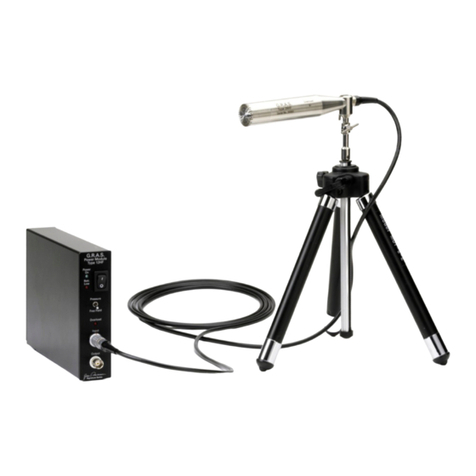
G.R.A.S.
G.R.A.S. 40HF instruction manual
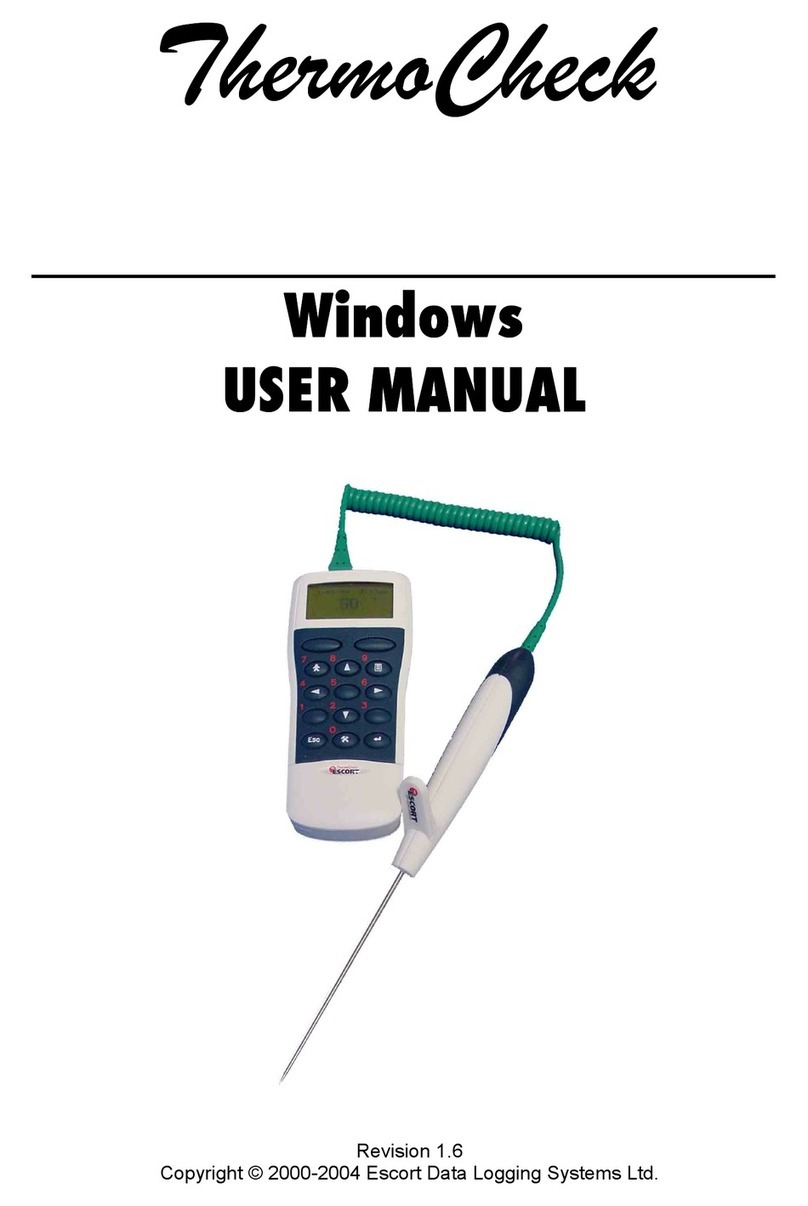
Escort
Escort Thermo Check for Windows 1.6 user manual

3M
3M SE-400 Series Getting started
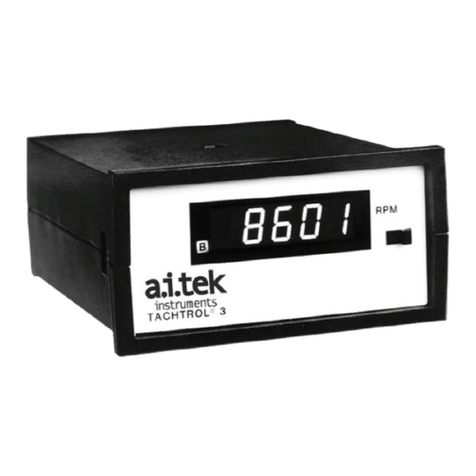
AI-Tek Instruments
AI-Tek Instruments TACHTROL 3 instruction manual
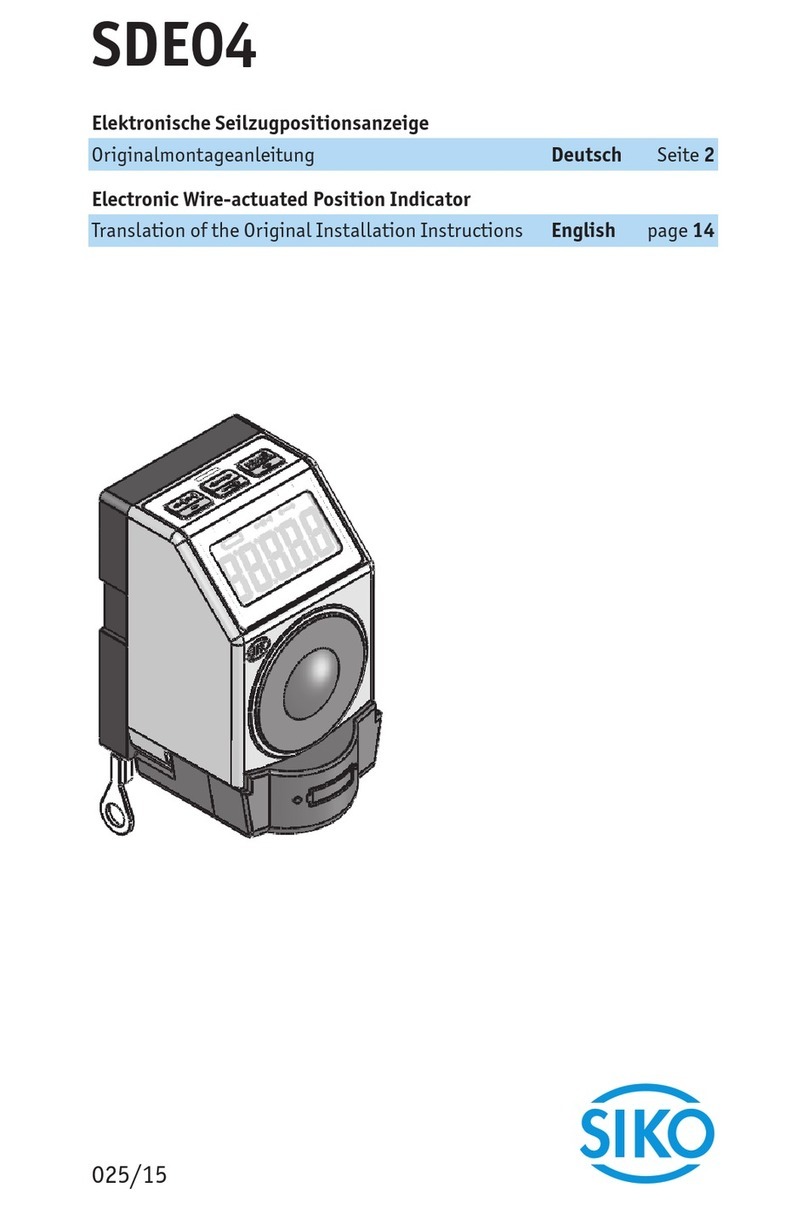
Siko
Siko SDE04 Original Installation Instructions
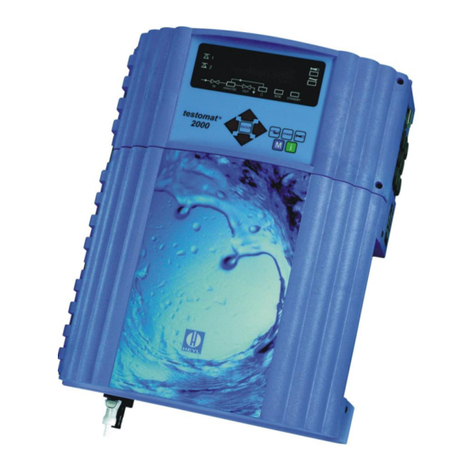
Lenntech
Lenntech Testomat 2000 Polymer operating instructions

York Survey Supply
York Survey Supply 354820 operating instructions
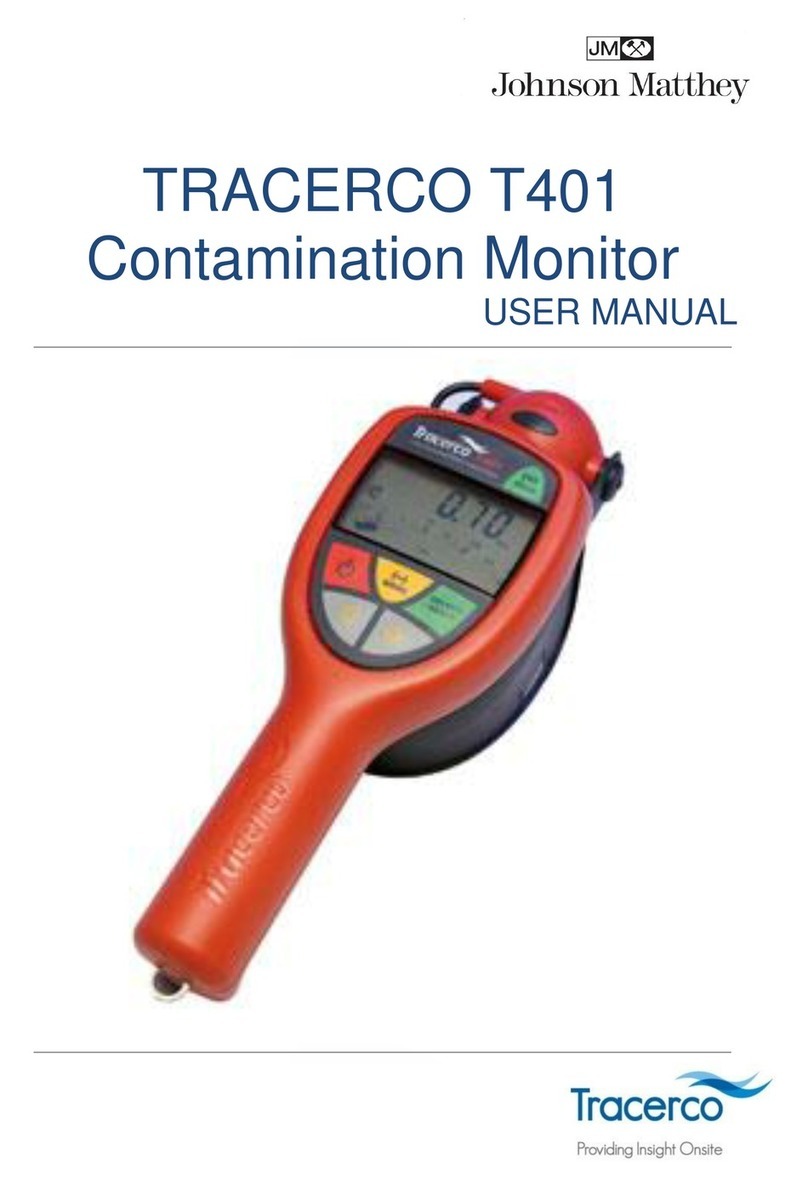
Johnson Matthey
Johnson Matthey TRACERCO T401 user manual
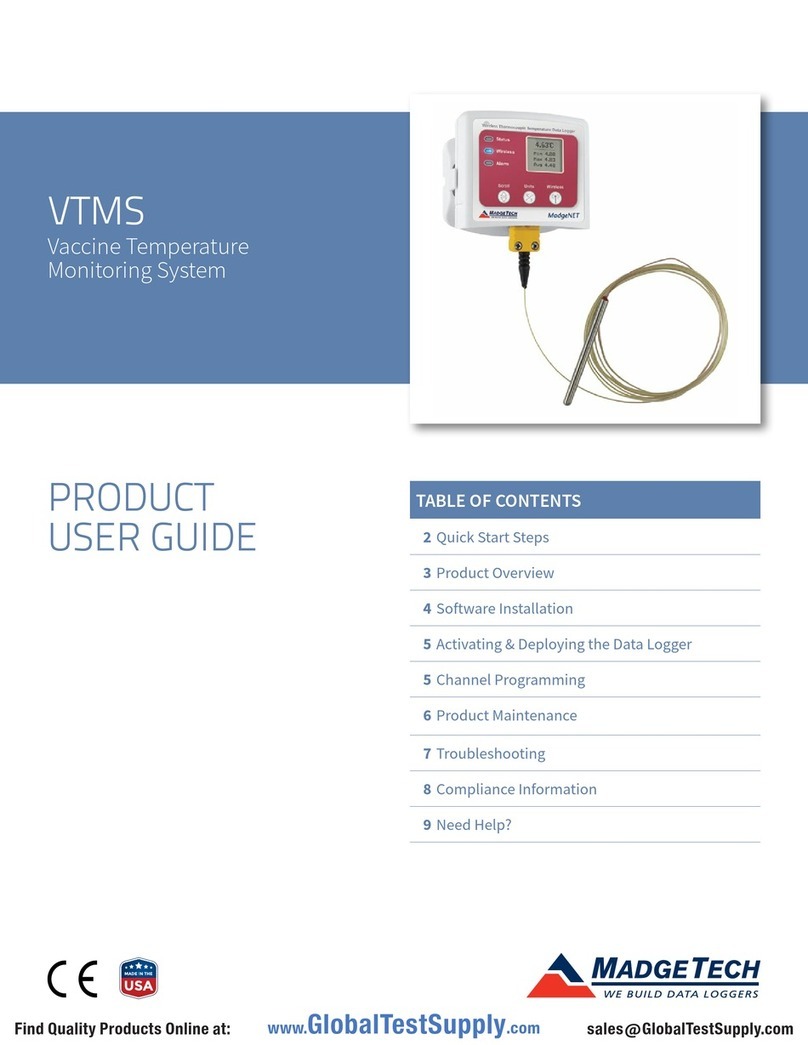
MadgeTech
MadgeTech VTMS Product user guide
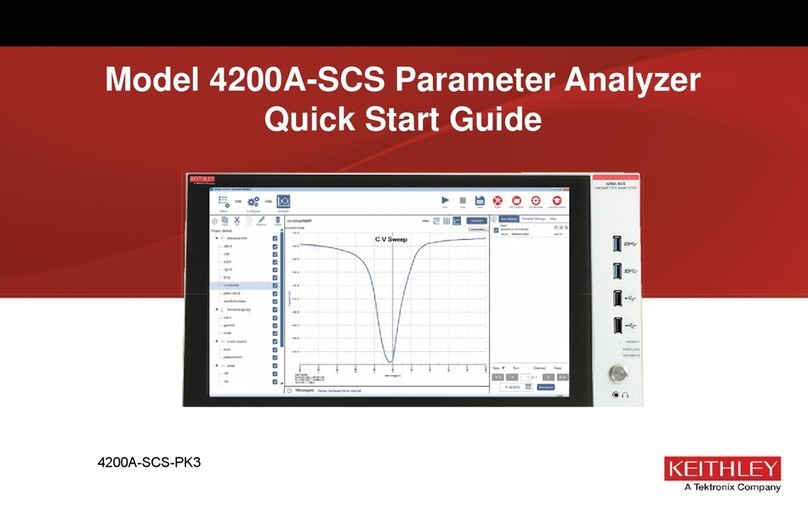
Keithley
Keithley 4200A-SCS-PK3 Quick Sart Guide
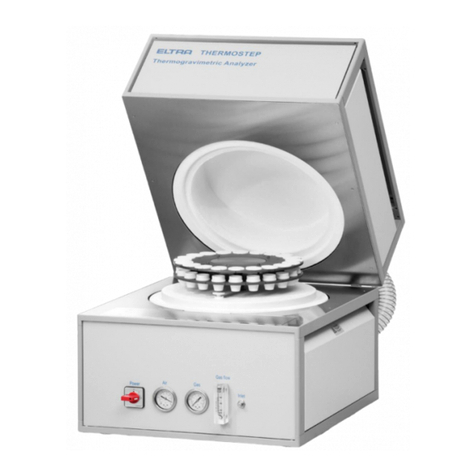
ELTRA
ELTRA Thermostep TGA manual
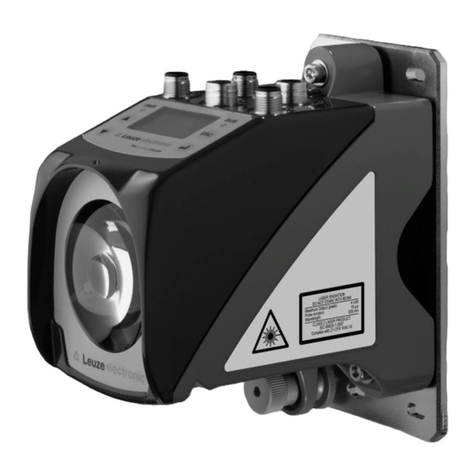
Leuze electronic
Leuze electronic AMS 307i Series operating instructions
